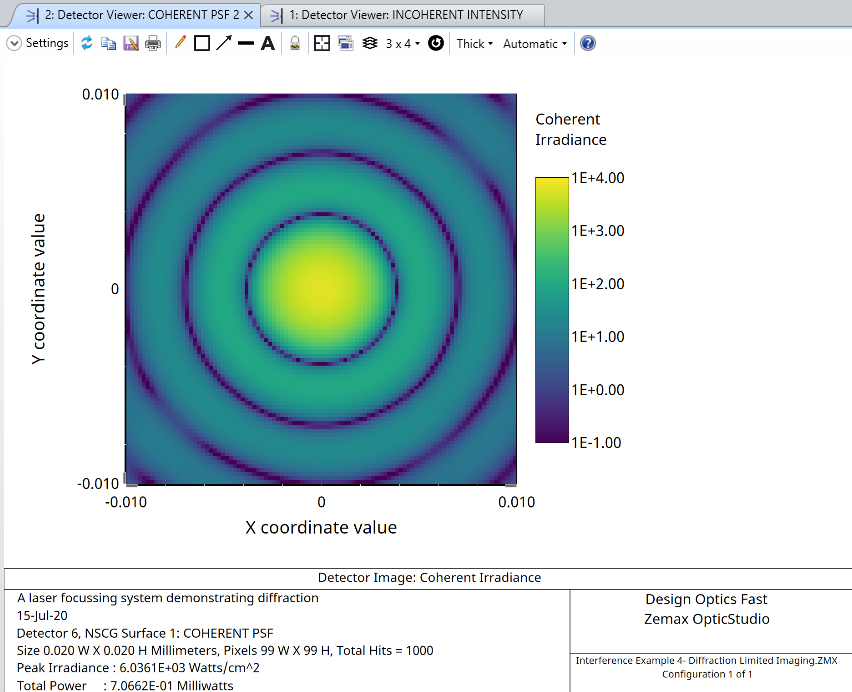Hello,
I'm trying to simulate a system that focuses a beam with lenses after it reflects off of a DMD. I have made a rudimentary model of a DMD using NSC, but if I try to use POP I get an error message saying that the entrance pupil can't be located. I noticed that most of the posts that come up about POP show setups that are purely sequential. This might be a naive question, but is it not possible to use POP when you have non-sequential components in your system? Or is it because I have my entire system in non-sequential mode, so it doesn't take any of the lenses to be the entrance pupil?
Using the regular ray tracing method in non-sequential mode doesn't show any of the expected diffraction from the mirrors, and I don't observe a Fourier transform where I would expect.
Thanks for your help!
Katya




